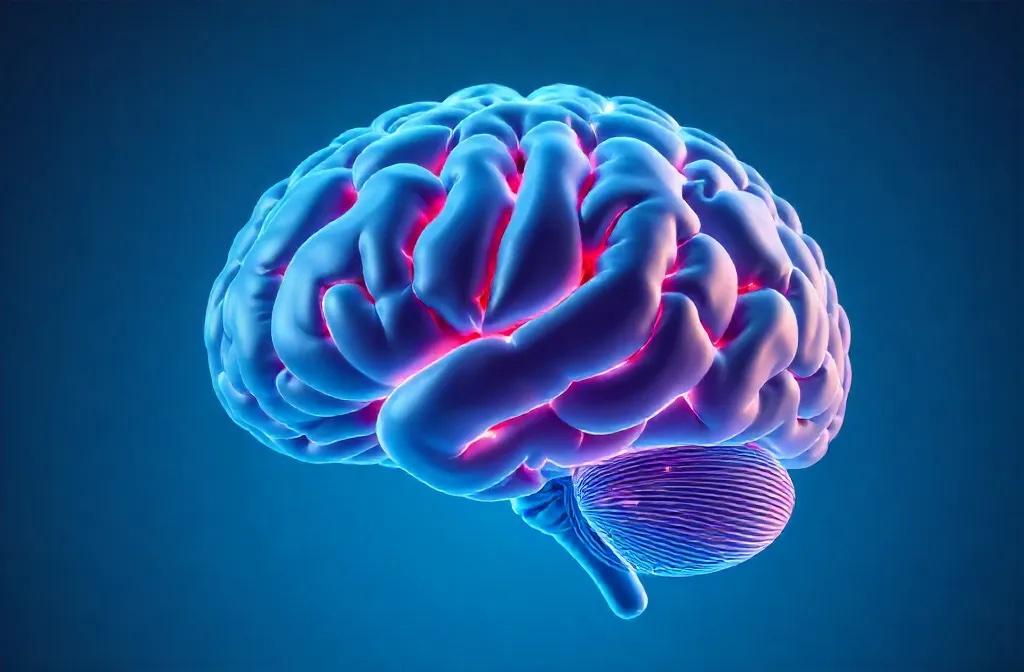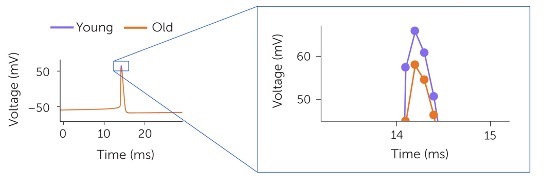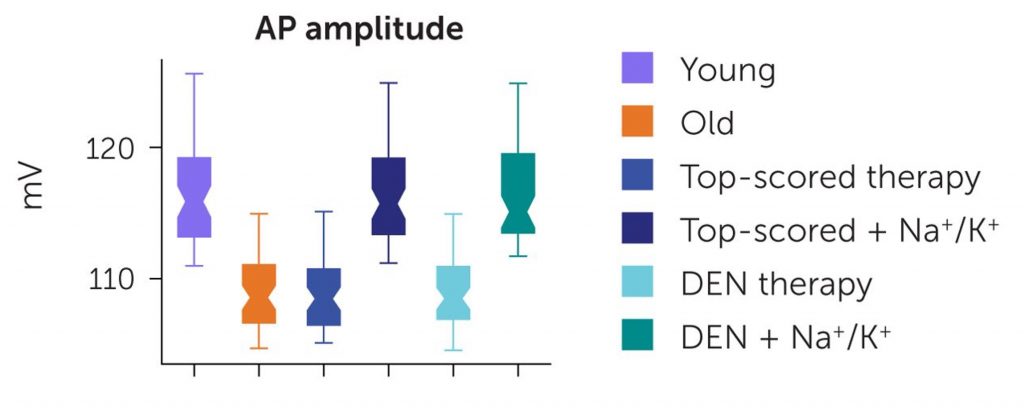Key Points:
- A 20-year project called the Blue Brain Project has produced the world’s most advanced brain simulator.
- According to the simulation, combining certain dietary patterns and exercise regimens with NAD+ supplementation can, at least partially, prevent brain aging.
Perhaps the most important aspect of sustaining human health is the maintenance of energy. We can’t go long without consuming energy, which comes from potatoes, chicken, and other foods. Our cells utilize food’s nutrients to produce ATP, a molecule bustling with potential energy. Moreover, they self-destruct when ATP runs too low, demonstrating the importance of ATP in keeping our cells alive.
Now, researchers from École Polytechnique Fédérale de Lausanne, a top European research university in Switzerland, reveal the importance of ATP metabolism in brain aging. Their findings come from the world’s most advanced brain simulator, which took 20 years to develop as part of the Blue Brain Project. Included in their results is data showing that combining diet, exercise, and NAD+ supplementation could be one of the best ways to slow brain aging.
The Ultimate Brain Simulator
Applying experimental data from young and aged brains, the Swiss researchers utilized the most comprehensive model of the brain, limited only by data sparsity within realms of knowledge such as the regulatory processes of aging. The data-driven model integrates previous models and the most important cellular, subcellular, molecular, and metabolic processes involved in the brain’s electrical activity, energy metabolism, and blood flow. Strikingly, it incorporates 16,800 interactions between enzymes and metabolites.

Diet, Exercise, and NAD+ Restore the Brain’s Metabolic Flexibility
A key finding of the study was that aged brains are more fragile and less metabolically flexible than young brains, making it difficult for cells to adapt to changing stimuli. With this in mind, the researchers searched for drugs that would improve the adaptability of multiple metabolic pathways in aging brains. They found that a protein called ESRRA (estrogen-related receptor ⍺) was linked to the most pathways, making it the most likely to counteract aging.
ESRRA is a transcription factor, a protein involved in turning genes on and off, that declines with age. Among the genes it regulates, ESRAA modulates those involved in the health of mitochondria, the primary producer of ATP in our cells. ESRAA is also involved in autophagy, our cellular waste disposal and recycling system. Moreover, ESRAA is linked to sirtuin 1, a longevity-associated enzyme that uses NAD+ as fuel.
As an alternative to ESRRA, the researchers investigated whether the brain’s metabolic adaptability could be improved by strategic interventions. They found that the combination of diet, exercise, and NAD+ supplementation (DEN) raised ATP levels in neurons and astrocytes — neuronal support cells — to youthful levels, similar to ESRRA.

The diet was based on lower blood glucose and higher blood β-hydroxybutyrate, an alternative fuel source to glucose called a ketone body synthesized from fat. Low blood glucose and high β-hydroxybutyrate occur in response to fasting (not eating food), caloric restriction (consuming fewer calories), and fasting-mimicking diets, such as the ketogenic diet. The exercise parameter was based on lactate levels, which transiently increase in response to exercise. The NAD+ supplementation parameter was based on NAD+ supplements, including the NAD+ precursors NMN and NR, restoring NAD+ brain levels.
The Missing Piece
While ESRRA and DEN therapy were shown to largely restore neuronal and astrocytic ATP levels, they had less of an effect on action potentials (APs) — the changes in voltage that occur within our neurons, representing the brain’s electrical activity. The researchers found that the amplitude of APs was lower in old brains than in young brains. Moreover, the culprit of the reduced AP amplitude was a protein called sodium-potassium ATPase (Na+/K+ ATPase), the largest consumer of ATP in our body.

Na+/K+ ATPase, also called the sodium-potassium pump, transports potassium into cells and sodium out of cells, maintaining the electrical gradient needed to generate APs. In Alzheimer’s disease patients, Na+/K+ ATPase activity is reduced, suggesting it contributes to brain aging. Indeed, the aged brain simulator showed a reduction in Na+/K+ ATPase. In searching for which intervention could restore AP amplitude, the researchers found that neither ESRRA nor DEN therapy could do so. However, elevating Na+/K+ ATPase in combination with either ESRRA or DEN therapy restored old brain AP amplitude.

With that being said, there are currently no compounds that directly increase the activity of Na+/K+ ATPase in the brain. Therefore, it may be difficult to specifically target Na+/K+ ATPase as an anti-aging intervention. However, intaking adequate levels of potassium, found in foods like avocados and Brussels sprouts, could increase Na+/K+ ATPase activity. Intaking enough cholesterol, found in foods like beef and eggs, could also potentially elevate Na+/K+ ATPase activity by stabilizing their place in cellular membranes.
Countering Brain Aging Using NAD+
Neurodegenerative disorders such as dementia, the risk of which significantly increase with age, are on the rise. However, accumulating scientific evidence suggests that neurodegenerative diseases can be prevented or delayed. Among the potential root causes of neurodegeneration and brain aging are deficits in energy metabolism, i.e., ATP metabolism. Mitochondrial dysfunction, which leads to lower ATP production, is associated with the loss of synaptic connections that characterize degenerating neurons.
When compared to other organs, the brain consumes a disproportionate amount of ATP, accounting for only 2% of the body’s mass yet consuming about 20% of the body’s ATP. A growing body of scientific research suggests that energy metabolism declines with age, leading to a reduction in ATP. However, the data-driven simulations ran on the world’s most advanced brain model point to the combination of diet, exercise, and NAD+ supplementation as a therapy for reversing age-related ATP decline.
Diet
When it comes to diet, high glucose levels seem to promote aging, so consuming a diet that keeps blood glucose levels in check could be beneficial. Consuming less carbohydrates can minimize spikes in blood glucose, whereas fasting or consuming very little carbohydrates, such as with the ketogenic diet, can maintain low blood glucose levels for a sustained duration.
Exercise
When it comes to exercise, lactate buildup seems to be beneficial for the brain. Exercises that increase lactate levels the most are anaerobic exercises, which force our cells to bypass mitochondria and oxygen to produce ATP. These include high-intensity exercises like weightlifting, sprinting, and high-intensity interval training (HIIT).
NAD+ Supplementation
NAD+, which declines with age, plays a critical role in energy metabolism. Without NAD+, our mitochondria could not produce ATP from the food we eat. NAD+ carries the potential energy gained from the metabolism of fats, carbohydrates, and proteins to the electron transport chain (ETC) in mitochondria. The ETC generates the electrochemical gradient necessary to synthesize ATP. The most common method for increasing NAD+ levels is with NAD+ precursors such as NR (nicotinamide riboside), NMN (nicotinamide mononucleotide), nicotinamide, or niacin.